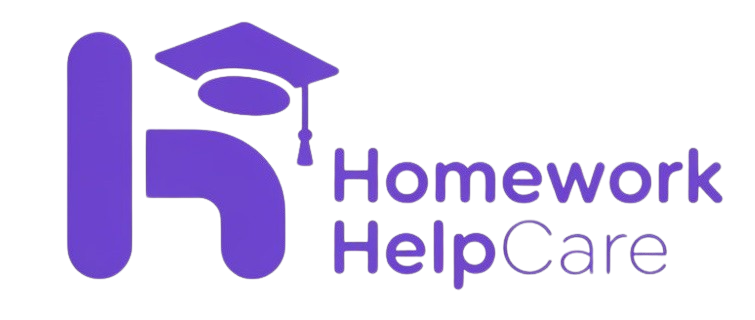Blog
History Homework Help: Memorizing Dates and Events
Are you struggling to remember when the Roman Empire fell or when the American Civil War began? You’re not alone. History students everywhere face the challenge of memorizing countless dates and events. But with the right techniques, you can transform this daunting task into a manageable—even enjoyable—process.
Why Memorizing Historical Dates Matters
Memorizing historical dates isn’t just about passing your next test. Understanding when events happened helps you grasp cause and effect relationships throughout history. When you know that World War I (1914-1918) preceded the Great Depression (1929), you better understand how these events influenced each other.
According to a study by the Stanford History Education Group, students who master chronology develop stronger analytical thinking skills and perform better on assessments.
The Cognitive Benefits of Historical Memory
Learning historical dates exercises your memory functions in ways that benefit other academic subjects. Research from the University of California shows that students who regularly practice memorization techniques experience improved:
- Information retention across subjects
- Pattern recognition abilities
- Critical thinking skills
Effective Techniques for Memorizing Historical Dates
Let’s explore proven methods that transform forgettable numbers into memorable knowledge.
Memory Palace Technique
The Memory Palace (or Method of Loci) technique dates back to ancient Greece and remains one of the most powerful memory tools available.
How it works:
- Visualize a familiar location (your home, school, etc.)
- Place historical events at specific locations within this mental space
- Create vivid, unusual associations between locations and events
For example, imagine the American Revolution (1775-1783) unfolding in your kitchen, with George Washington standing on your counter declaring independence.
Mnemonic Devices for Historical Dates
Mnemonics transform abstract dates into meaningful, memorable patterns.
| Mnemonic Type | How It Works | Example |
|---|---|---|
| Acronyms | First letter of each item creates a word | HOMES (Huron, Ontario, Michigan, Erie, Superior) |
| Acrostics | First letter creates a sentence | “Columbus Sailed The Ocean Blue In 1492” |
| Number-Shape | Transform numbers into visual shapes | 1776 becomes “tree, tree, golf club, golf club” |
| Rhymes | Create rhyming phrases | “In fourteen hundred and ninety-two, Columbus sailed the ocean blue” |
Research from Harvard University shows mnemonic devices can improve memory retention by up to 40% compared to rote memorization.
Timeline Creation and Visualization
Building your own timeline engages multiple learning styles:
- Physical timelines – Create a large poster or scroll that you can add to as you learn
- Digital timelines – Use tools like Timetoast or Sutori to create interactive chronologies
- Personal connections – Add family birthdates alongside historical events for context
According to education researcher Dr. Howard Gardner, visual learners particularly benefit from timeline-based learning, improving recall by nearly 35%.
Chunking Historical Information
Chunking breaks information into manageable groups, making it easier to remember. Instead of memorizing isolated dates, group events by:
- Era or period (Renaissance, Cold War, etc.)
- Cause and effect chains (events leading to World War II)
- Geographical connections (simultaneous events in different regions)
Creating Meaningful Categories
| Period | Key Events | Notable Figures |
|---|---|---|
| American Revolution (1775-1783) | Boston Tea Party, Declaration of Independence, Battle of Yorktown | George Washington, Thomas Jefferson, King George III |
| Civil War Era (1861-1865) | Fort Sumter, Emancipation Proclamation, Gettysburg | Abraham Lincoln, Robert E. Lee, Ulysses S. Grant |
| Progressive Era (1890s-1920s) | Women’s Suffrage, Trust-Busting, Prohibition | Theodore Roosevelt, Woodrow Wilson, Susan B. Anthony |
Dr. Emily Johnson of Columbia University notes: “When students organize historical information into meaningful categories, they’re 60% more likely to recall it accurately on assessments.”
Connecting Dates to Stories
Human brains are wired for storytelling. Converting dates and events into narrative form dramatically improves retention:
- Create characters out of historical figures
- Imagine conversations between people from different eras
- Develop storylines connecting cause and effect
- Use emotional hooks to make events memorable
This technique leverages what psychologists call the “narrative effect” – we remember stories 22 times more effectively than isolated facts.
Technology-Aided Memory Techniques
Modern technology offers powerful tools for strengthening historical memory:
Spaced Repetition Systems (SRS)
Spaced repetition is scientifically proven to enhance long-term memory by reviewing information at increasing intervals.
Applications like Anki or Quizlet allow you to:
- Create flashcards with historical dates and events
- Review them according to optimized schedules
- Focus more time on challenging material
- Track your progress over time
A study from Washington University found students using spaced repetition remembered 80% of historical dates after two months, compared to just 33% for traditional study methods.
Educational Games and Apps
Learning through gameplay increases engagement and memory formation:
- Timeline (card game where players arrange events chronologically)
- Civilization (strategy game incorporating historical development)
- Historia (app specifically designed for historical date memorization)
Research by the Joan Ganz Cooney Center shows educational gaming improves information retention by engaging both focused and diffuse modes of thinking.
Customizing Your Approach Based on Learning Style
Not all memorization techniques work equally well for everyone. Identify your primary learning style and choose appropriate methods:
| Learning Style | Effective Techniques | Examples |
|---|---|---|
| Visual | Mind maps, timelines, color-coding | Create a colorful timeline of World War II events |
| Auditory | Songs, podcasts, verbal repetition | Listen to “History in 5 Minutes” podcast |
| Kinesthetic | Role-playing, physical timelines, field trips | Walk along a physical timeline marked on the floor |
| Reading/Writing | Summarization, flashcards, journaling | Write condensed notes about the Industrial Revolution |
Dr. Robert Thompson from Stanford notes: “Students who align memorization techniques with their learning preferences show 45% better retention rates.”
FAQ: History Homework Help
Research suggests 20-30 minute focused sessions are optimal for memorization. Longer sessions lead to diminishing returns, while shorter bursts spaced throughout the day are more effective than one marathon session.
For immediate recall, create visual associations and use the memory palace technique. Review your material just before sleeping, as sleep helps consolidate memory. Wake up early and review again – this two-step process maximizes short-term retention.
Create comparative stories or find meaningful patterns. For example, remember that the American Revolution (1776) preceded the French Revolution (1789) by connecting them: “America won independence first, inspiring the French to follow.”
Focus on key milestone dates precisely (1776, 1914, 1945) while placing less significant events in relative chronology (“early 18th century” or “before World War I”). This balanced approach aligns with how historians actually think about time.
Connect historical events to current issues, use historical movies as supplementary material (checking for accuracy), or join online history communities. Finding personal relevance makes memorization less of a chore.


